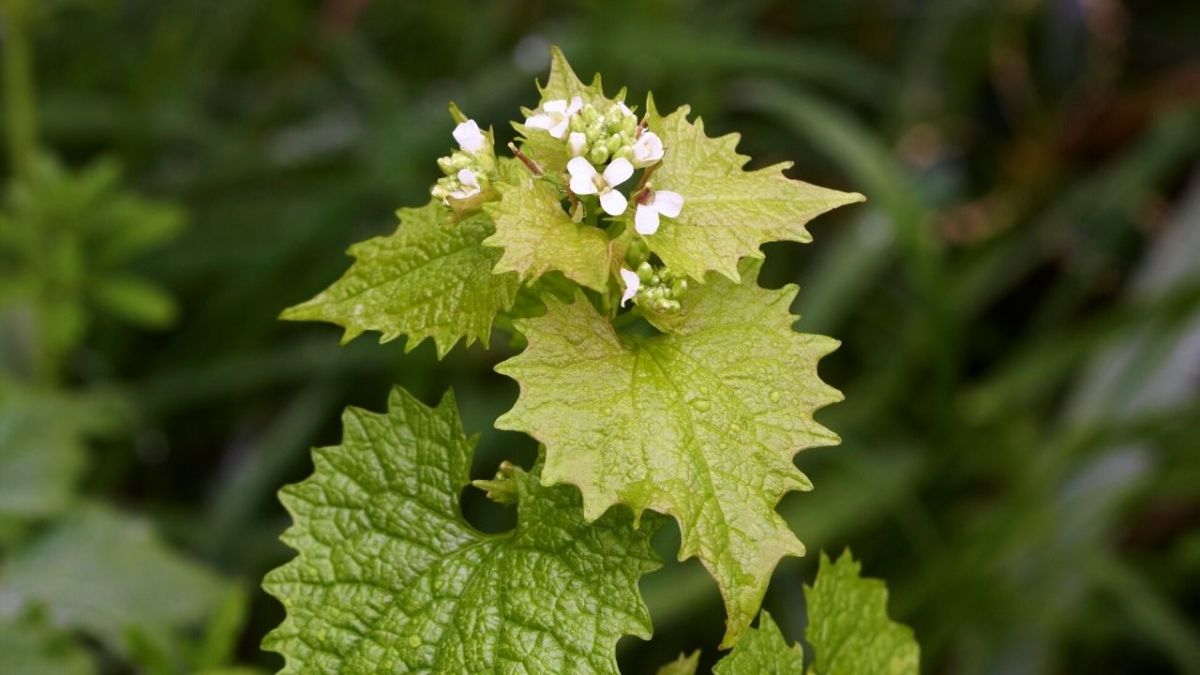
The garlic mustard: the wild vegetable that tastes slightly like garlic and can be found almost throughout Germany
👉 The key facts from this guide
- Garlic mustard is a tasty wild herb without any poisonous lookalikes.
- The plant grows in Europe, Asia, and North America and is easy to identify.
- Garlic mustard is rich in Vitamins A and C and can be used raw or in various recipes.
- The plant has healing properties and can help with various ailments.
- Appreciated in Europe, but considered an invasive species in North America.
- Garlic mustard is an excellent choice for beginners in herb picking.
Garlic mustard has a bad reputation, as it can multiply quickly and only a few people know its great uses.
Today, I want to show you what this tasty powerhouse plant has to offer.
For beginners, this wild herb is effortless to identify. Additionally, it has no poisonous lookalikes.
So let's get started, and by the end of the guide, you will have an entirely different view of garlic mustard.
What is garlic mustard?
Garlic mustard is a wild herb native to Europe, Asia, and North America. It has also been introduced to other parts of the world.
In Germany, it is also called Lauchkraut, Knoblauchsrauke, or Knofelkraut. In English, it can be found under the names Jack-by-the-hedge, Garlic Mustard, Garlic Root, Hedge Garlic, Sauce-alone, Jack-in-the-bush, Penny Hedge, or Poor Man's Mustard.
You can find it in moist areas such as ditches, river banks, meadows, stream banks, and forest edges.
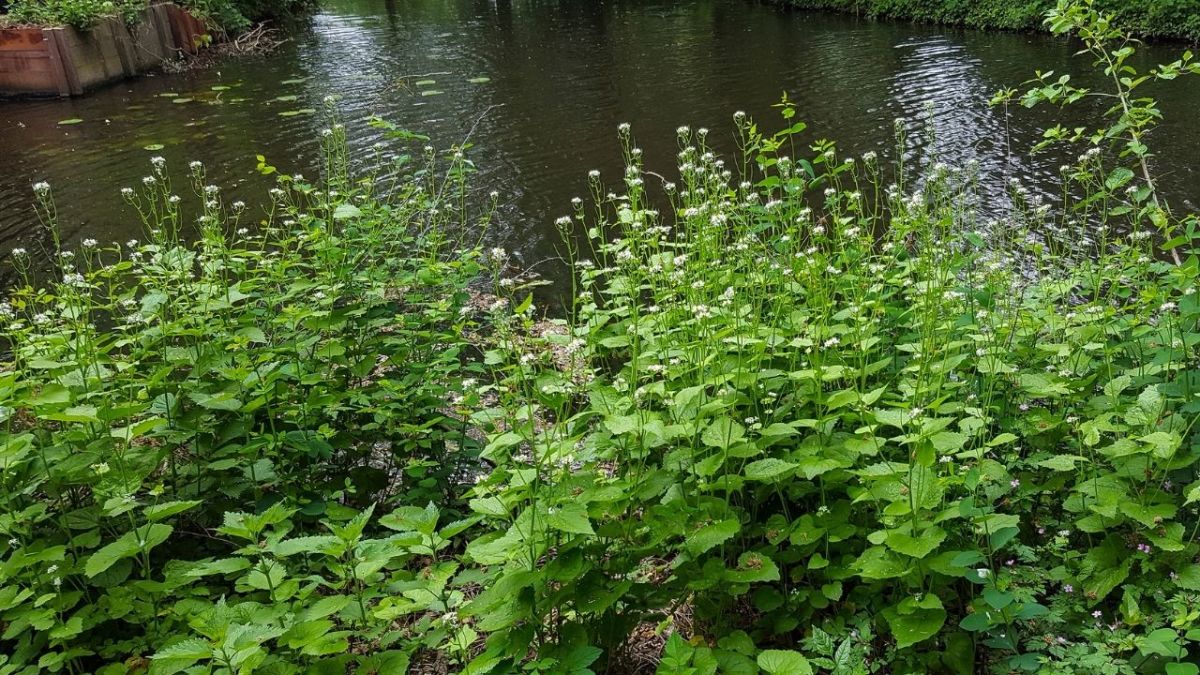
Garlic mustard grows 20 to 100 cm high and produces white flowers with four petals, blooming from April to July. With four petals appearing, garlic mustard belongs to the crucifer family.
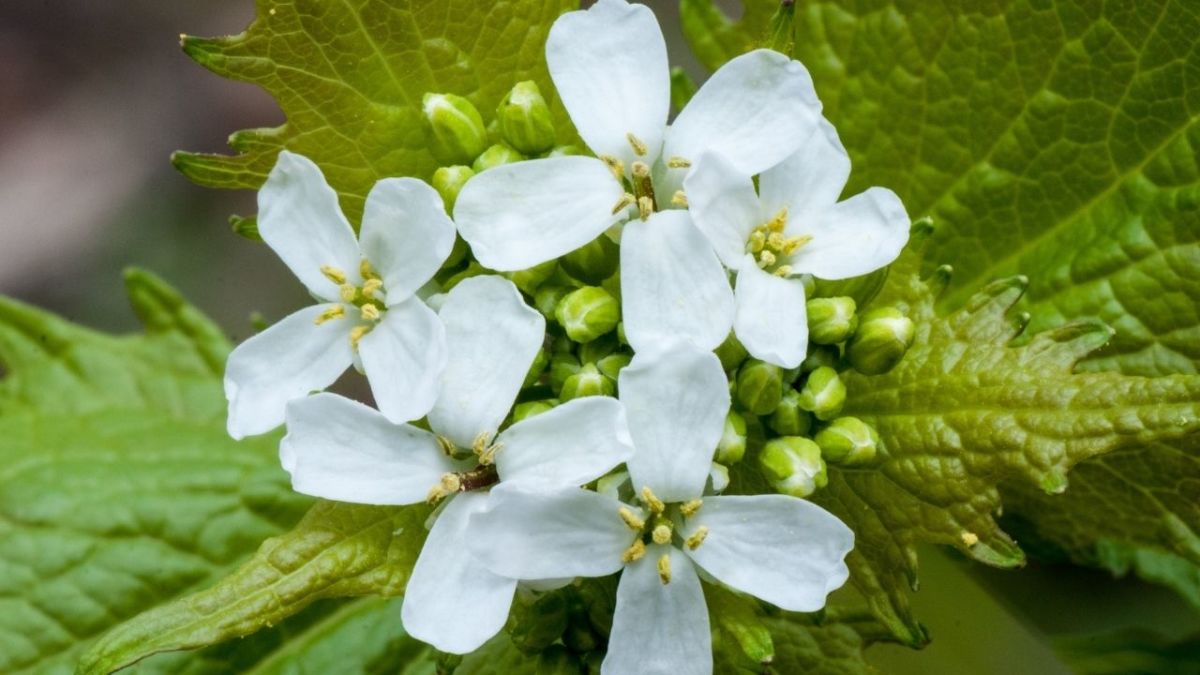
The leaves of garlic mustard have a heart-shaped blade with a dark green color and a lighter underside. The plant has a gentle smell of garlic, especially when crushed.
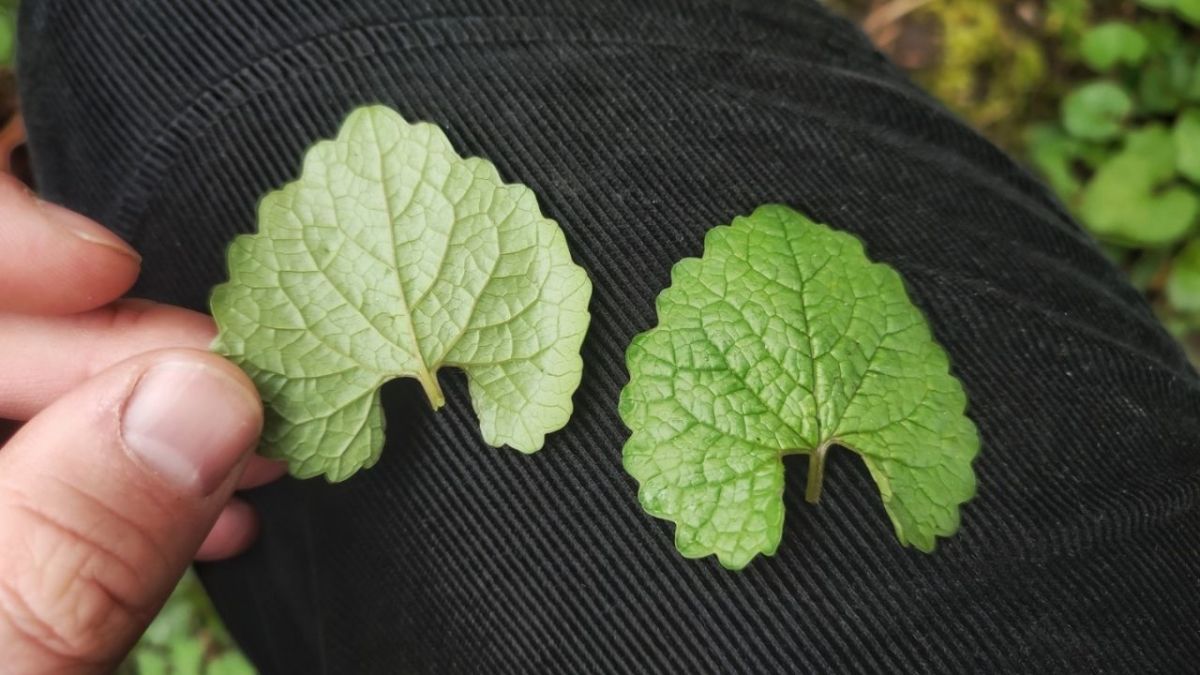
The stem of the garlic mustard is slightly square and edible in its early years. It is a biennial plant, which means it grows for two years before dying.
For plant lovers like us, garlic mustard is a great wild vegetable. It has been around for a long time and was popular in medieval Germany as both a spice and a salad ingredient. It is also one of the oldest plants in German cuisine.
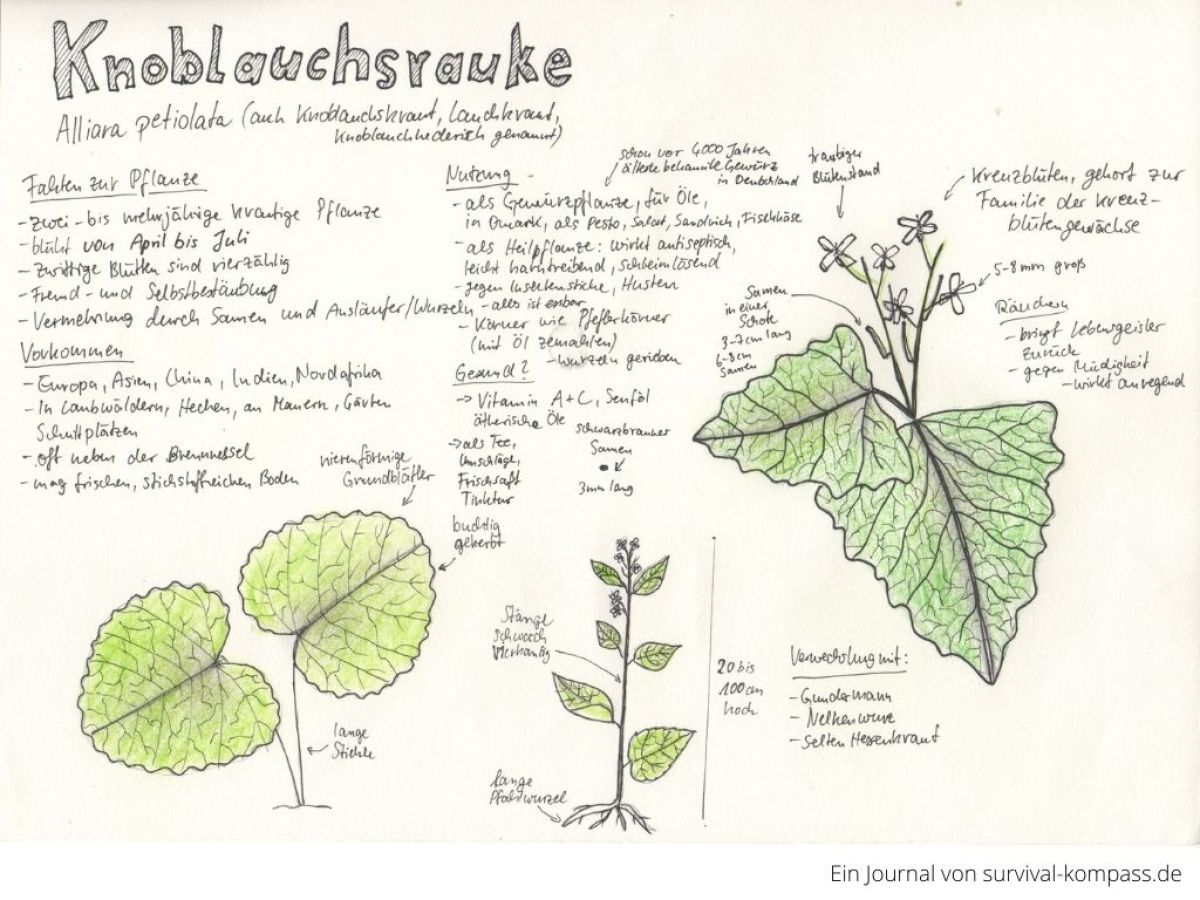
Garlic mustard is also often used as an alternative to wild garlic. The taste is much more subtle and does not leave such a strong aftertaste of garlic as wild garlic.
History of garlic mustard
Garlic mustard has been used as a spice in Germany for 4000 years (e.g., finds from Neustadt in Holstein on the Baltic Sea prove this). It was used as medicine and as an additive to food.
The Romans brought garlic mustard to England, where it became a popular garden plant. However, it was not until the 15th century that it spread to North America (more on that later).
Earlier, every garden and farm had garlic mustard in their beds. It has been an important spice for centuries.
In the Middle Ages, people used garlic mustard seeds as a substitute for pepper, which is unfortunately forgotten today.
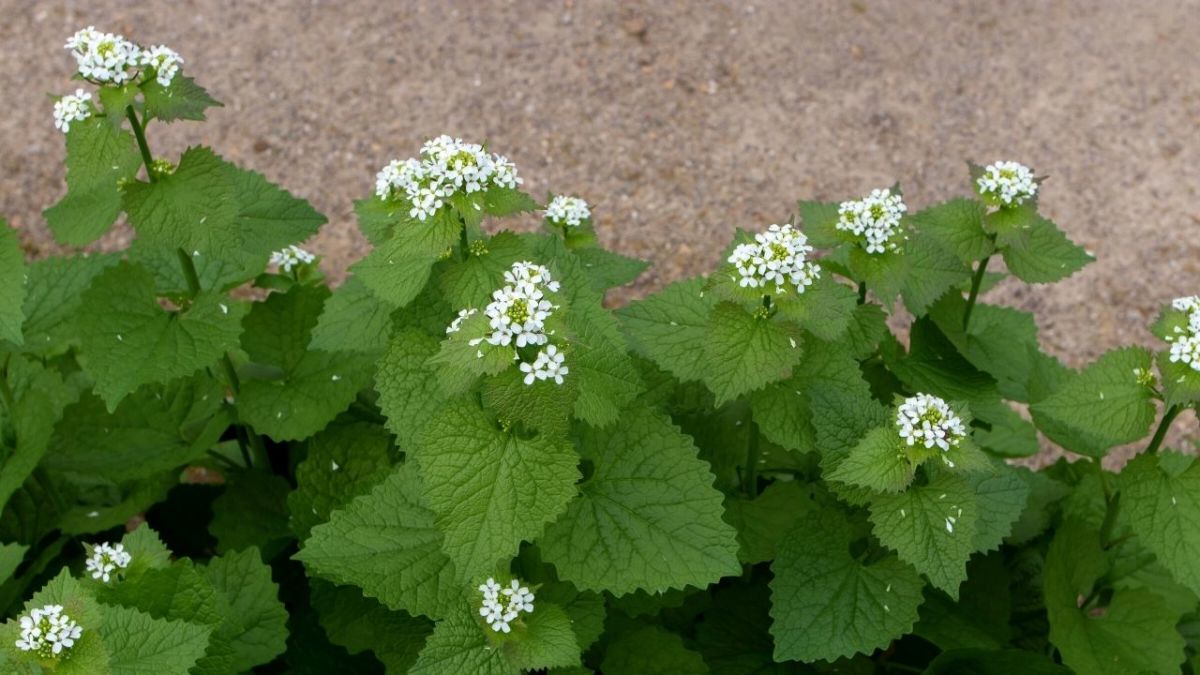
Advantages and Disadvantages of Collecting Garlic Mustard
Advantages of harvesting garlic mustard include: getting free wild greens, being able to eat them raw right away, enjoying their delicious taste, and benefiting from their health properties.
Disadvantages include: the taste of cooked garlic mustard is not as good since it loses its garlic flavor. Therefore, it is best to eat it fresh. Furthermore, if you do not like garlic, you will not enjoy this plant.
How to Recognize and Identify Garlic Mustard in the Wild
Garlic mustard leaves are generally heart-shaped with a waxy coating. The lower leaves are round, while the leaves further up the stem are jagged and pointed.
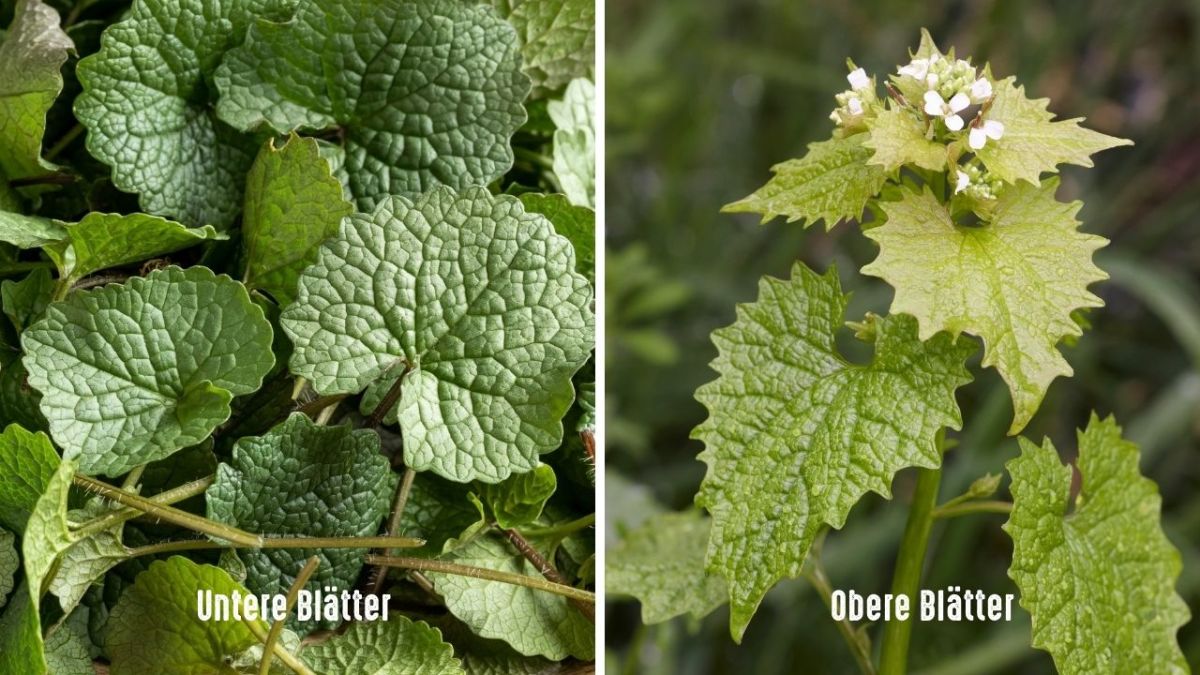
It has a distinctive appearance with clusters of small white flowers on slender stems. The stem leaves are jagged, triangular, or heart-shaped.
Garlic mustard is often confused with ground ivy, as they have similar leaves. But do not worry, ground ivy is not poisonous and is also edible.
To distinguish between the two, you should examine the leaves and flowers. Ground ivy has leaves that are serrated like teeth, while garlic mustard leaves feel smooth.
In contrast to ground ivy, garlic mustard also has clusters of small white flowers, while ground ivy flowers bloom on long stems with many flowers.
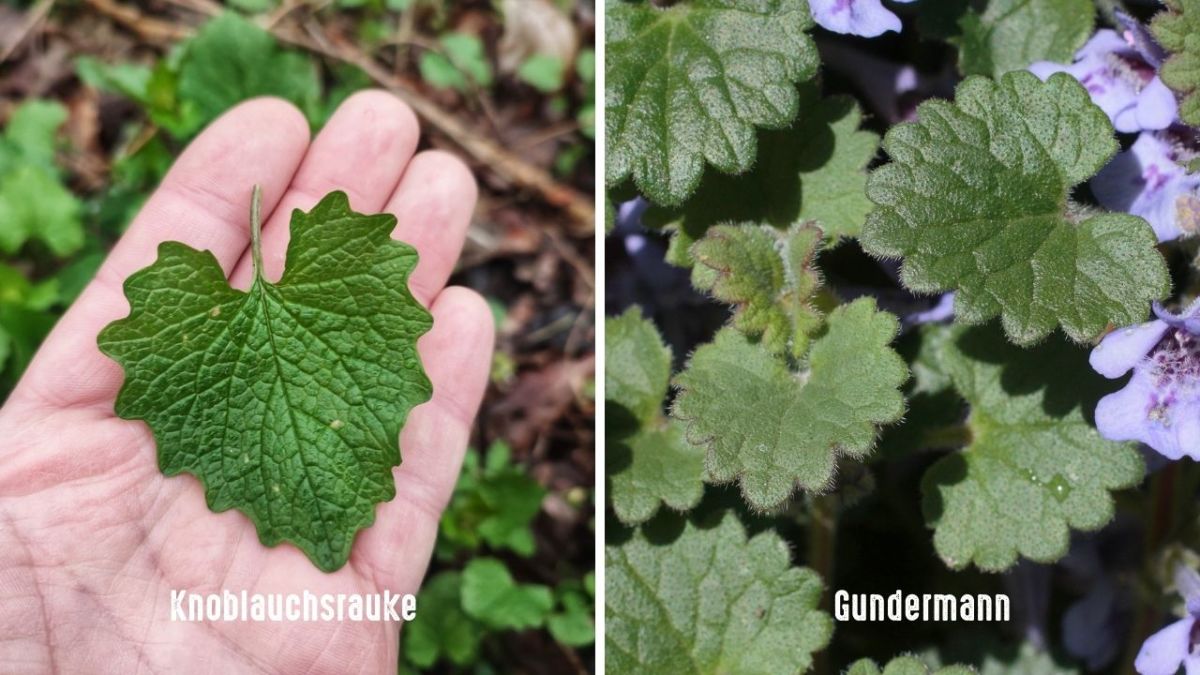
Additionally, garlic mustard has a distinctive taste and smell that distinguishes it from other plants. The leaves have a similar taste to garlic, while the flowers are spicy and peppery with a hint of sweetness.
Sometimes, garlic mustard is also confused with cuckoo flower (non-toxic) and rarely with hen bane (non-toxic).
Nettle is also a candidate for confusion, or dead-nettle (such as purple dead-nettle). However, both are also non-toxic.
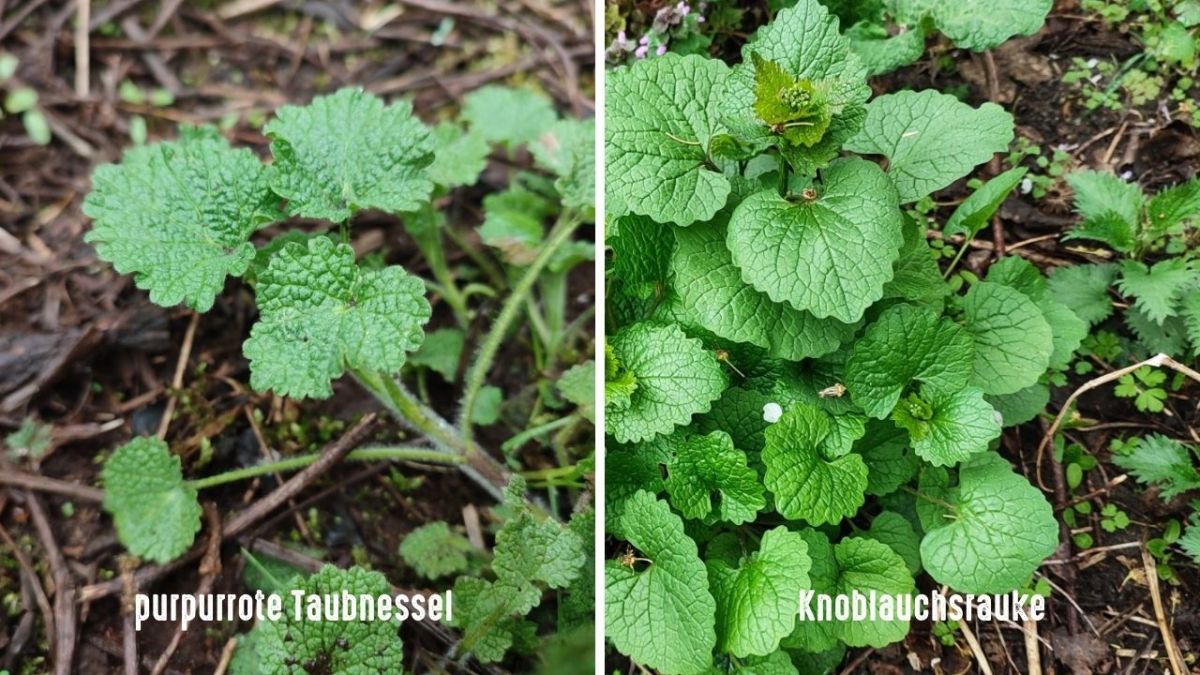
Harvesting tips for the best garlic mustard
Harvesting tips for the best garlic mustard:
- The best time to collect garlic mustard is between March and June. Harvest the plants early, before they are in full bloom (April-June), and not after they have seeded. It is one of the plants you can collect early in the season after winter.
- Be sure to harvest early in the morning when there is still dew on the leaves, and avoid harvesting in hot weather.
- Stay away from sidewalks and hiking trails, as dogs often urinate there.
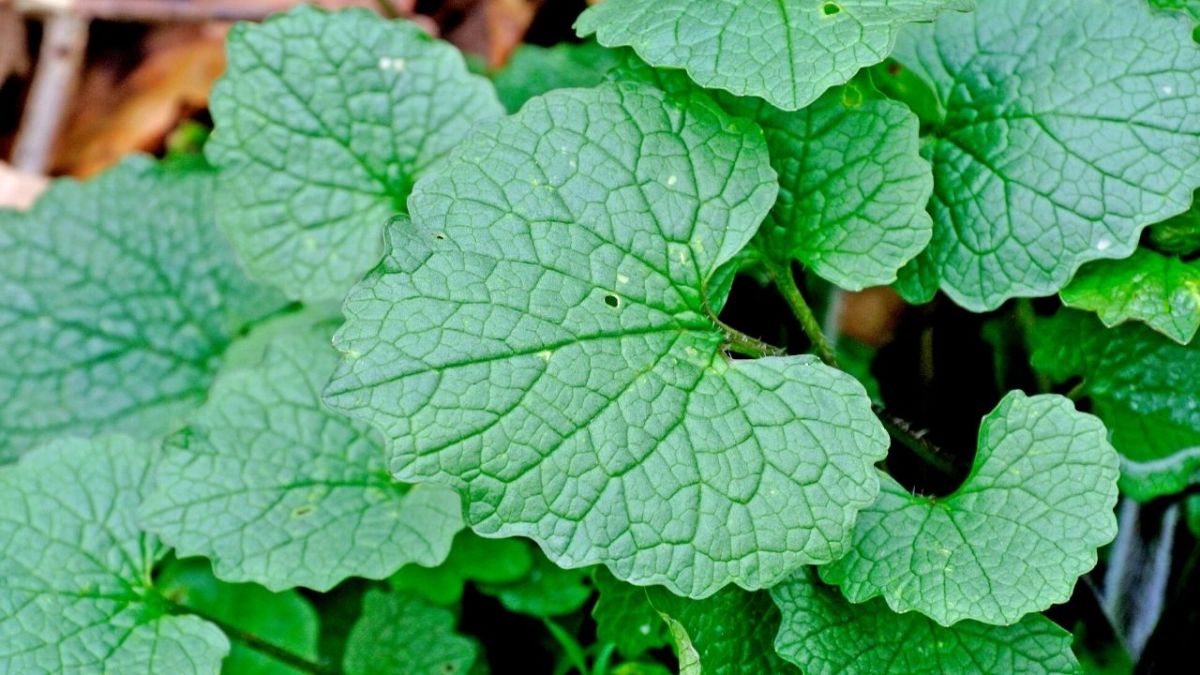
What edible foods can be made from garlic mustard?
Garlic mustard is edible and should be harvested when young. The roots taste very similar to horseradish, while the leaves become bitter when mature.
As a one-year plant, garlic mustard is a rosette, and its leaves can be harvested all year round. The plant of the second year can be eaten from the beginning to the middle of spring, before the delicate shoots harden and new leaves are present.
I love garlic mustard from the bottom of my heart because it is so versatile. It contains plenty of vitamin A (between 8600 - 19000 IU/ 100 g fresh plant) and vitamin C (190 - 400 mg/ 100 g fresh plant; in comparison: a lemon contains 53 mg/100 mg), mustard glycosides, and essential oils. You can eat all parts of the plant.
Furthermore, it tastes similar to wild garlic - so garlic-like and spicy, but more delicate in taste and not as strong.
Look at what you can make with it:
Raw in salad, cheese, pesto or directly with pasta
In the UK and other European countries, garlic mustard is used raw in cold cuts and salads. In North America, it appears in a variety of dishes, including salads, sauces, or as a side dish. Garlic mustard is also wonderful to use in cheese.
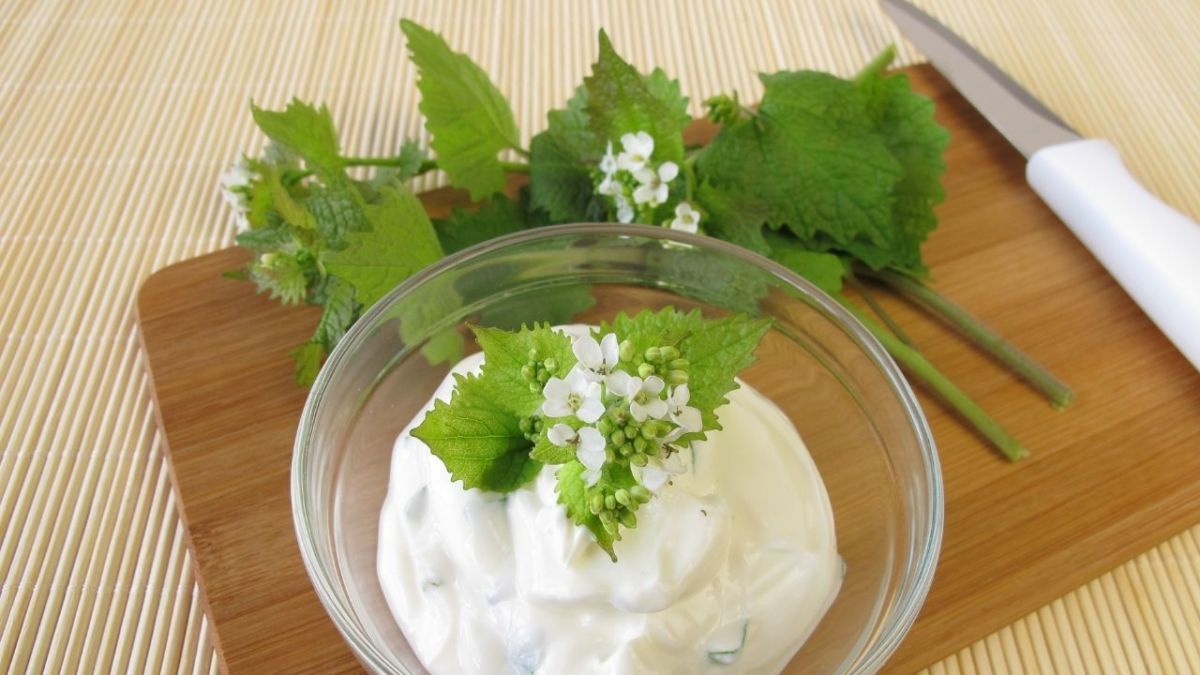
I also enjoy eating garlic mustard in pesto.
Here is my recipe for garlic mustard pesto:
- 2 handfuls of garlic mustard leaves
- about 100 ml cooking oil
- Pine or walnut kernels
- Parmesan cheese
- Salt
- Pepper
- optional: feta cheese or dried tomatoes
Put all ingredients in a blender and mix well. Prepare the pesto fresh, as it tastes best this way and does not keep for long.
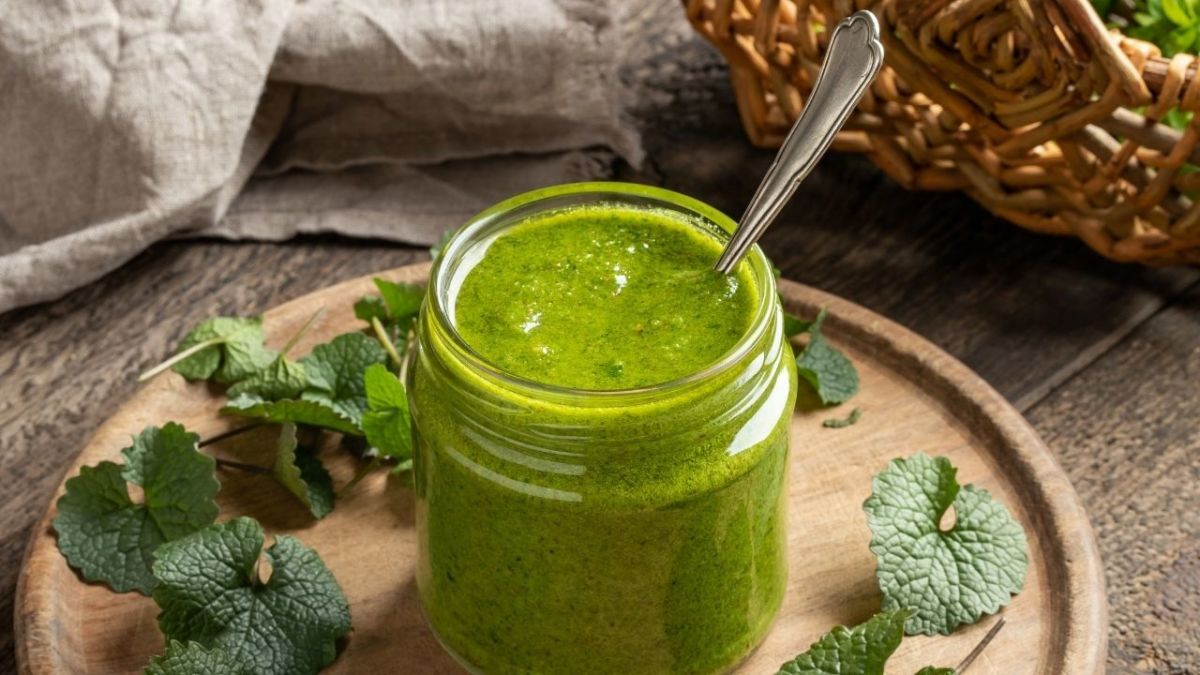
You don't have to add the dried tomatoes or cheese, but it gives the pesto a great flavor.
Tip for pasta
Cut the garlic mustard leaves into small pieces and add them to your noodles. Some olive oil, salt, and Parmesan on top, and you have an incredible meal.
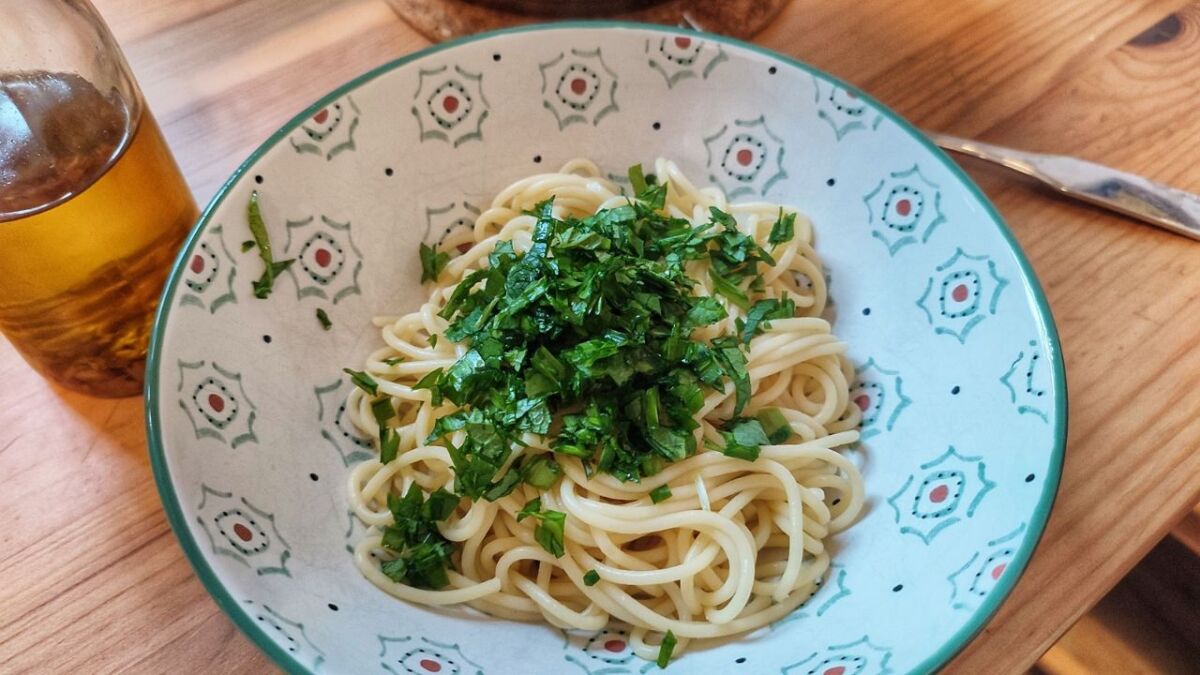
Garlic Mustard with Cream Cheese
Mix freshly chopped garlic mustard with cream cheese/cottage cheese and some salt and pepper. Yum… Delicious.
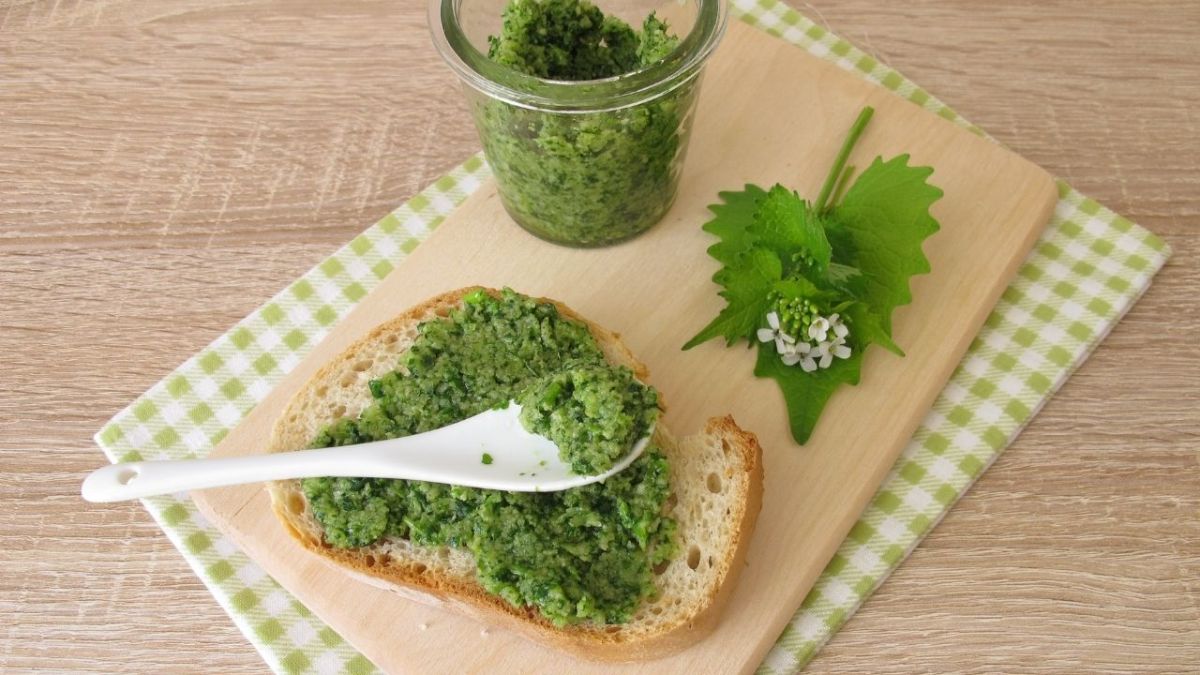
Garlic Mustard Herb Butter
Chop garlic mustard leaves and mix them with some salt and butter. You will get a stunning herb butter.
Mustard from Garlic Mustard
You can make mustard from the seeds of the garlic mustard. The seeds are very sharp and peppery. Collect many seeds (they are black to dark brown and tiny) and crush them with a mortar.
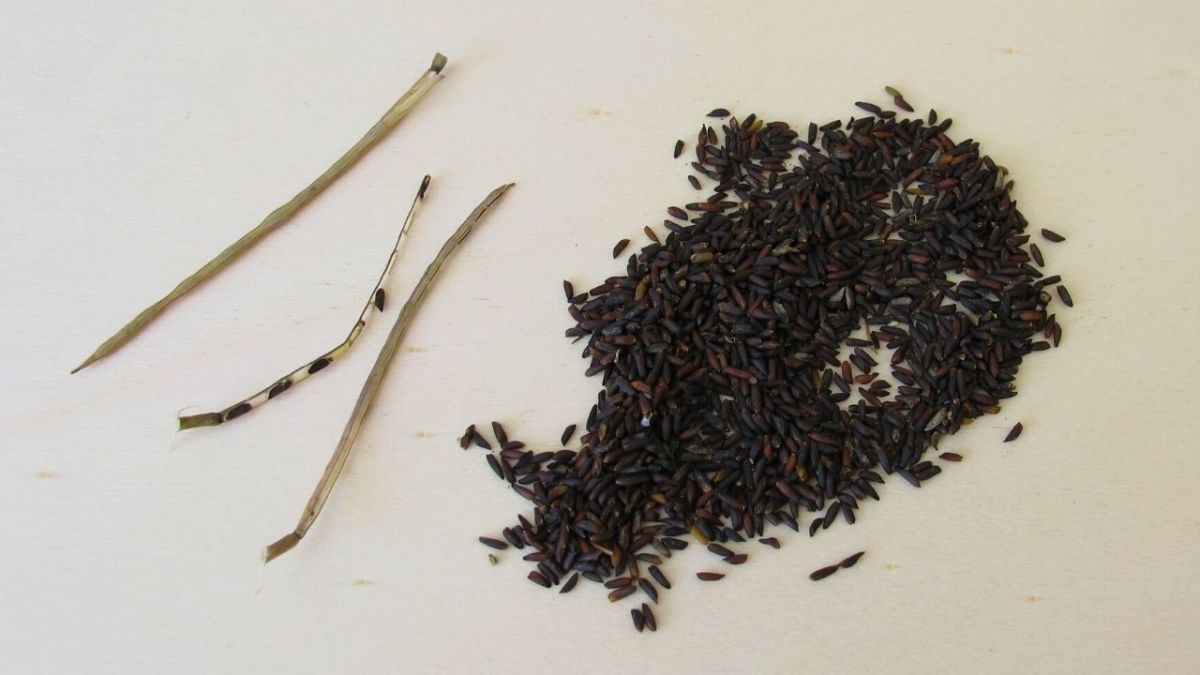
First Recipe for Garlic Mustard:
- approx. 100 g garlic mustard seeds
- 80 ml water
- 20 g honey
- 10 g salt
- 50 ml white wine vinegar
Crush the seeds with a mixer or mortar. Then add all the other ingredients and mix everything well. Put in small jars and let it steep for 10–14 days. This allows the flavor to develop.
Second Recipe for Garlic Mustard:
- Approximately 100 g of garlic mustard seeds
- 20 ml of oil
- A pinch of salt
Grind the seeds and mix all the ingredients together. Place the mustard in small jars and let it sit for about 10–14 days.
Garlic Mustard Oil
Garlic Mustard Oil can be made either from the leaves or seeds, there are two methods:
- Collect the leaves and dry them for about a week, then crush them and cook for about half an hour. The oil will rise to the surface of the water, where it can be collected using a sieve or cheesecloth. Yield is very low with this method.
- Place fresh leaves in oil (preferably thistle oil) and let sit in a shady spot for three weeks. The garlic mustard oil will be ready afterward.
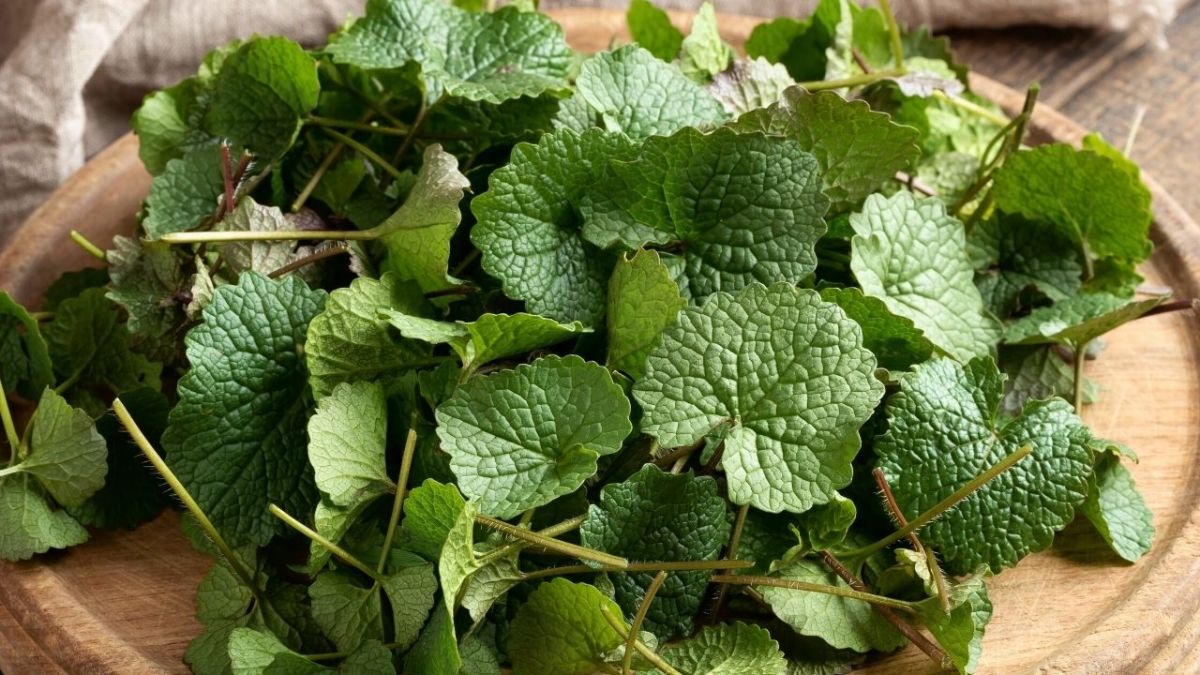
In Smoothies
Although I am not a big fan of smoothies myself, garlic mustard is also good for this. Mix it with other tasty vegetables in a blender to make a fresh juice that will make you feel alive.
PS: Although it can be used in dried form, the herb loses its medicinal properties and flavor too quickly.
Garlic Mustard in Folklore and as a Remedy
Garlic mustard has wonderful properties that are beneficial for our bodies. It is said to be: healing, expectorant, anti-inflammatory, antibacterial, stimulating, infection-relieving, promoting expectoration, diuretic and wound healing.
In traditional medicine, the plant is attributed with many healing properties, including being helpful for insect bites, eczema, bronchitis, asthma, skin problems, colds, coughs, rheumatism, gout, minor injuries, nerve pain, wound healing and wound cleansing.
For insect bites
You can use the leaves of the garlic mustard plant to make a paste. Simply crush or chew the leaves. The paste can then be applied to alleviate insect bites.
Remove any dirt or debris from the insect bite, if present. Then apply the paste and secure it with a cloth. Let it sit for 30 minutes and repeat the process.
Garlic mustard tincture
Chop fresh garlic mustard herb and put it in a sealable container. Add alcohol (such as ethanol, which can be obtained from a pharmacy) (40% vodka/liquor also works) to cover the herb completely.
Let the solution sit in a cool place (but not in the sun) for 2 to 6 weeks, and shake the liquid daily. Then strain the tincture into dark bottles. The tincture is good for at least one year.
This tincture is an alternative to tea, as it can be taken on the go, and it is recommended to take 3 x daily 10 - 50 drops. If the tincture is too strong, dilute it with water. The tincture can also be used to wash small wounds.
Garlic mustard tea
You can also make a tea from the plant. Here's how:
Steep 4 teaspoons of fresh or 2 teaspoons of dried garlic mustard herb in 250 ml of hot water for 5 to 10 minutes. Ideally with a lid.
A tea is used, for example, for blood purification, against spring flu, for spring detoxification, for gout/rheumatism and externally for wound cleansing.
P. S. Contraindications, side effects, and interactions with garlic mustard are not known. Kindly note that these recommendations do not replace a visit to a doctor or naturopath.
Established in Europe, unwanted in the USA
Europeans in the United States tend to be delighted when they discover garlic mustard - they usually do not see it as the pest that others might have.
This is because in Europe, garlic mustard has its place in the food chain, so to speak. Here, where it is a native plant, it is widely appreciated as a food plant and does not spread as virulently as it does in North America. In Europe, there are other plants that keep garlic mustard in check, creating a kind of natural balance.
Unfortunately, this is not the case in North America, where garlic mustard is an invasive species. If you search the US network for garlic mustard, you will find almost only instructions on how to eradicate it.
The plant apparently spreads massively and endangers other native, rare, and valued North American plants.
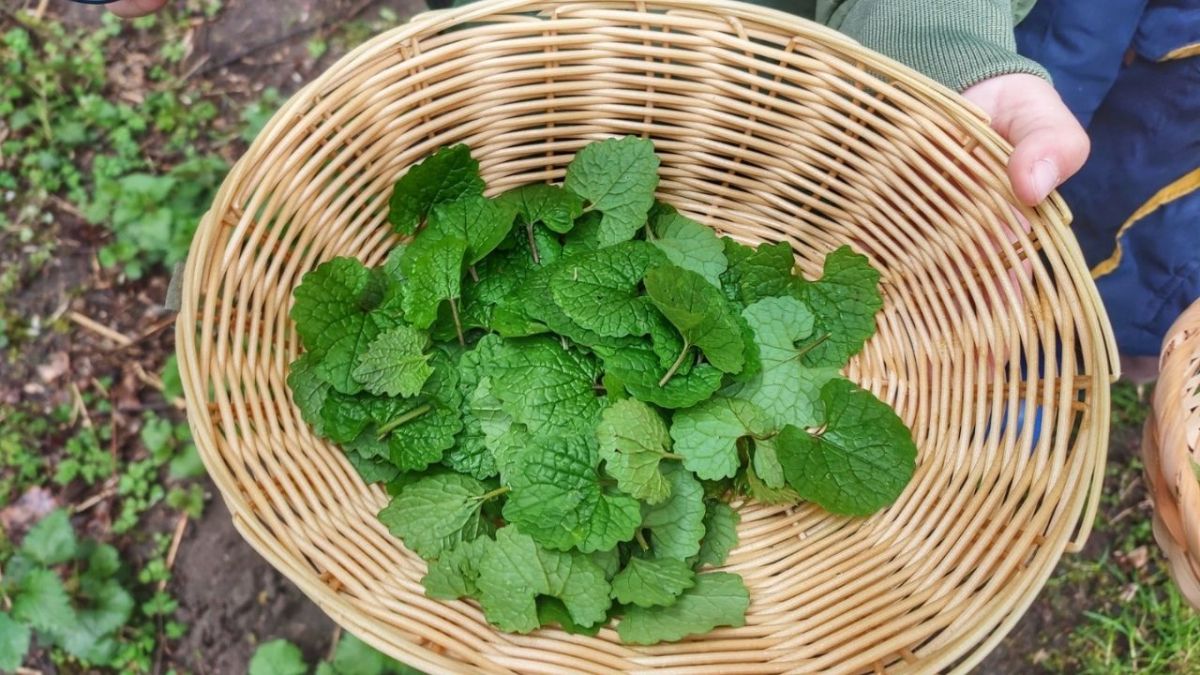
4 reasons why it's worth collecting garlic mustard
- One genius thing about the plant is that it has no poisonous look-alikes. This is a huge advantage, especially for beginners in herb collecting.
- Furthermore, the garlic mustard tastes just like garlic, but you won't smell like it.
- The plant can also be found in almost all of Germany and is easy to recognize.
- Everything about garlic mustard is edible, so you can help yourself to your heart's content.
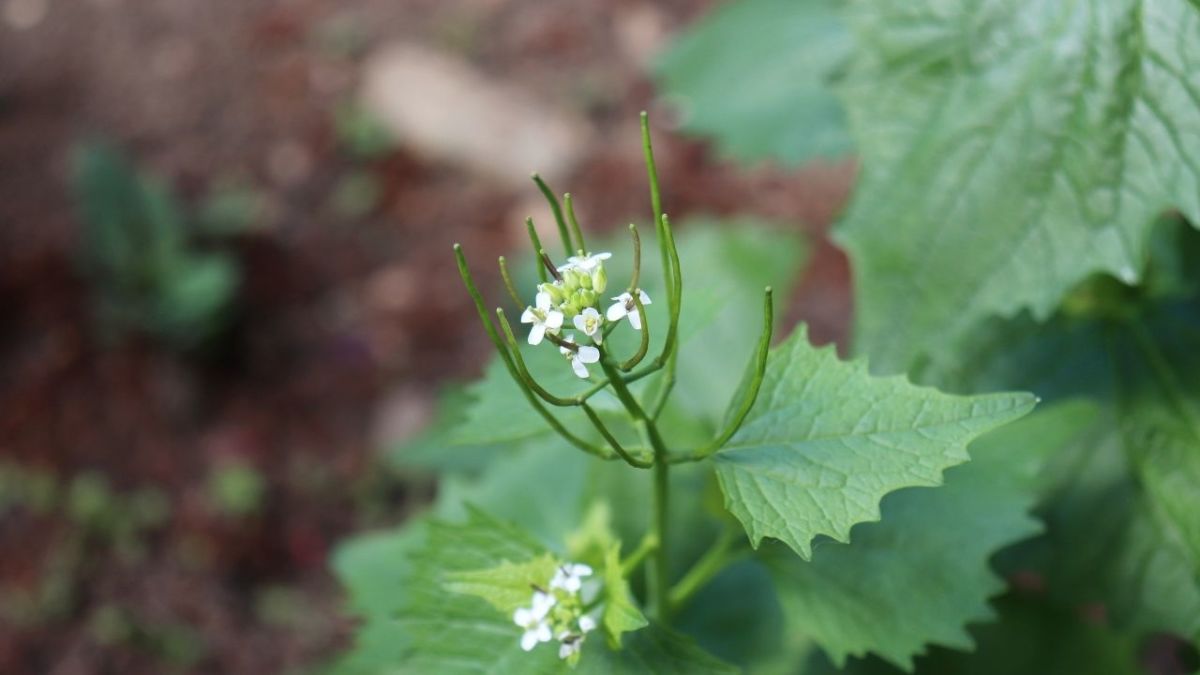
Conclusion: Garlic mustard is a great herb for eating, as it has many great qualities. It also offers other benefits, including being a medicinal herb, and can help with many ailments.
For me, this herb definitely belongs in my herb garden.

Sources for the guide
Hiller, Karl; Metzig, Matthias F.: Lexikon der Arzneipflanzen und Drogen, Erster Band, Spektrum Akademischer Verlag; Heidelberg 2003
Hänsel, R.; Sticher, O.: Pharmakognosie – Phytopharmazie, 8. Auflage Springer Medizin Verlag Heidelberg 2007
https://de.wikipedia.org/wiki/Knoblauchsrauke
https://en.wikipedia.org/wiki/Alliaria_petiolata

Author of the guide
Martin Gebhardt
Hey, I'm Martin. On my blog, you will learn the basics and numerous details about living in the wild. I think survival, bushcraft and the good life in nature are the keys to happiness. Find me here on Instagram or on YouTube. You can find more about my mission on the About Me page.
Was this guide helpful?
20 people found this guide helpful.
5.00 out of 5 points (20 Ratings)
Comments (0)
This post may contain affiliate links. So if you click on the links and make a purchase, I will receive a small commission at no additional cost to you. Click here, to learn more about it.


